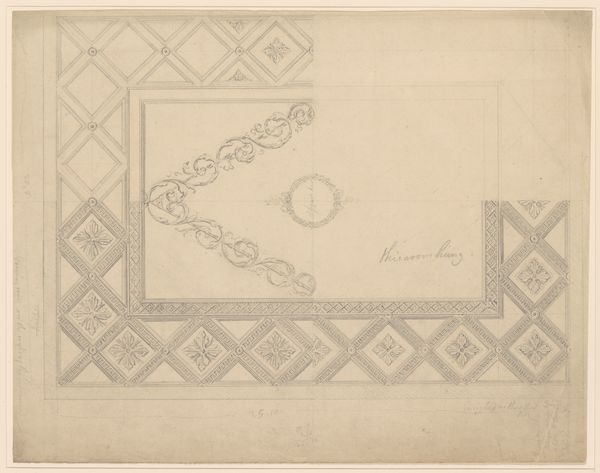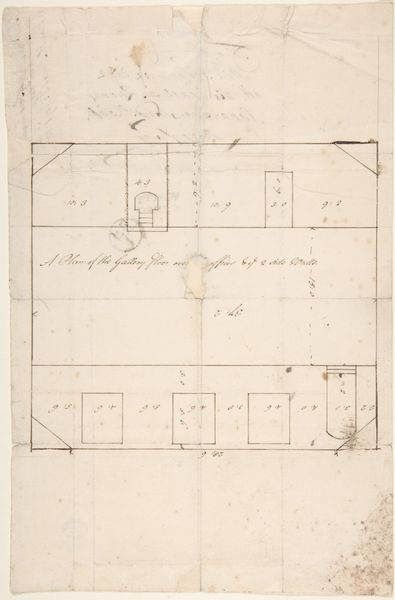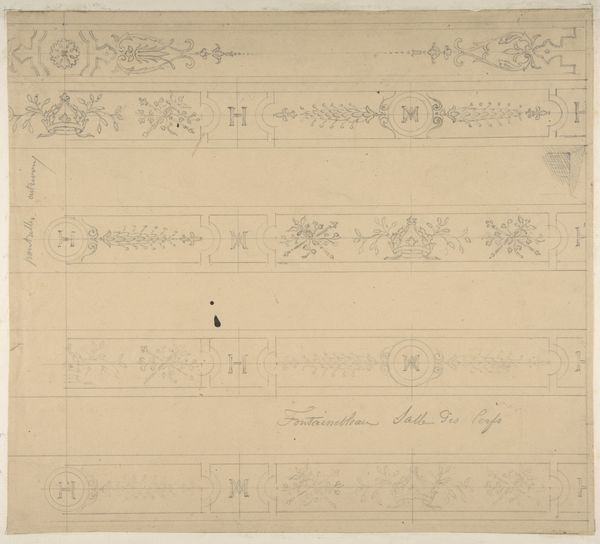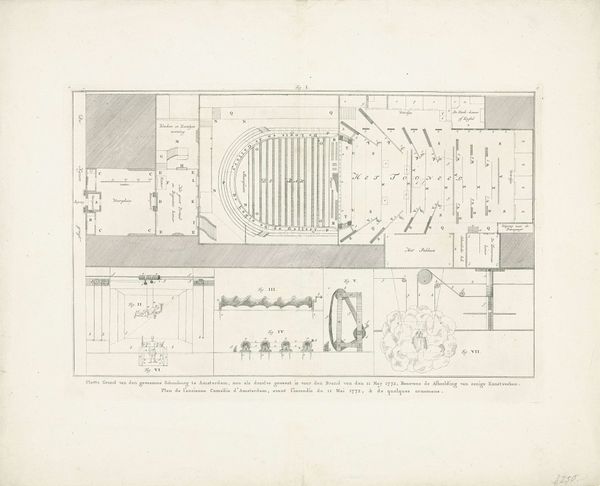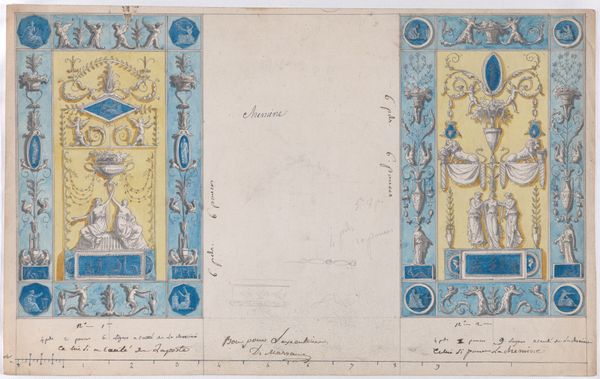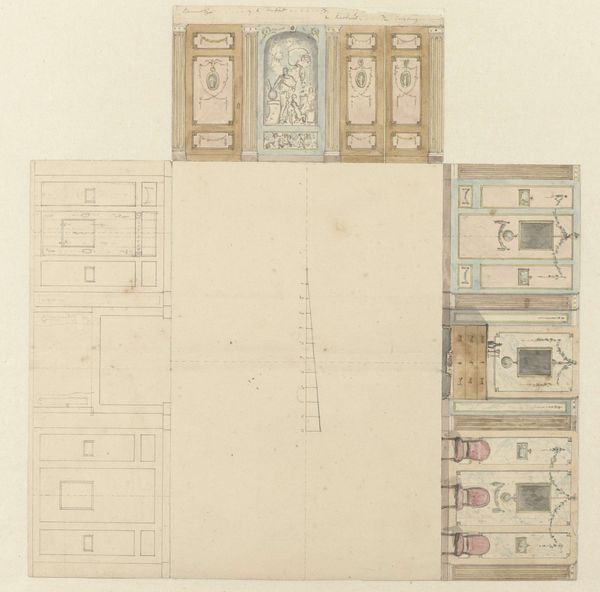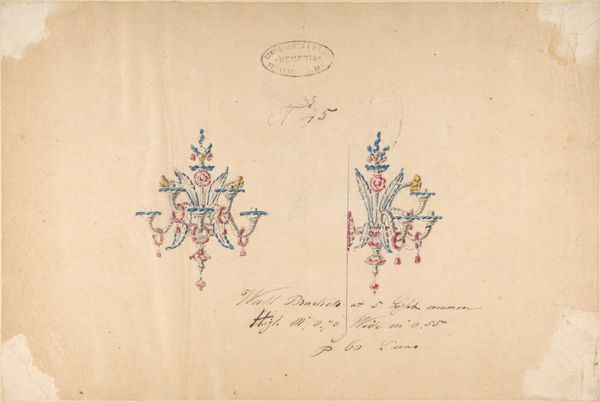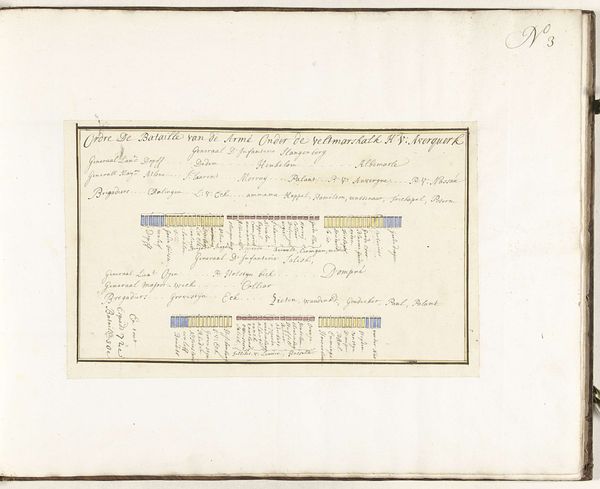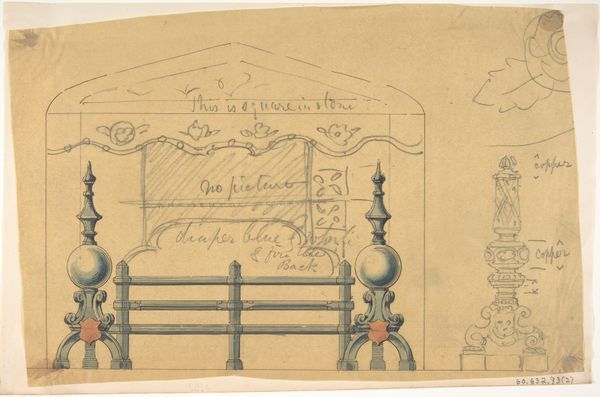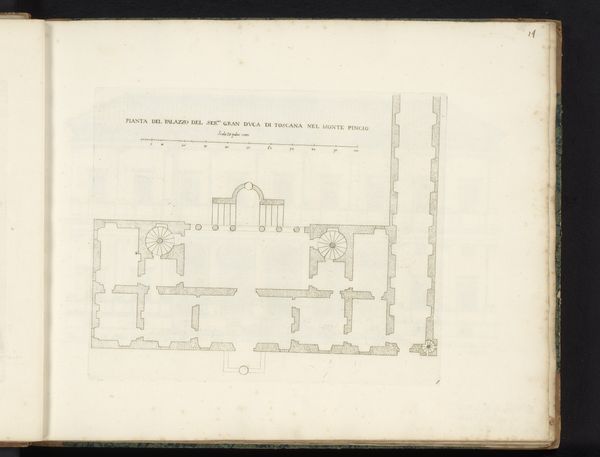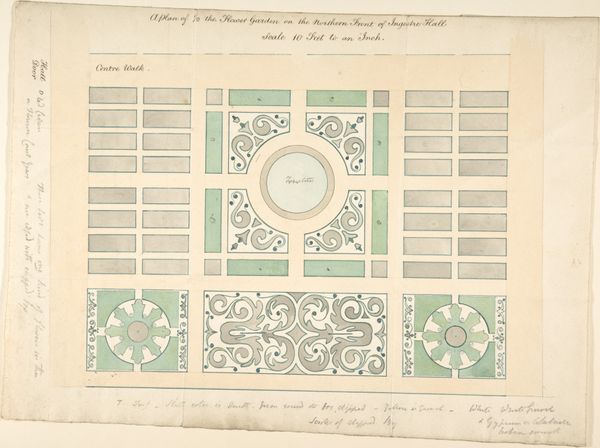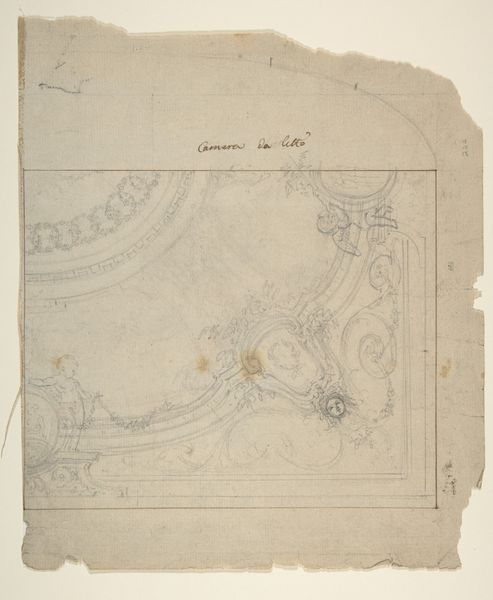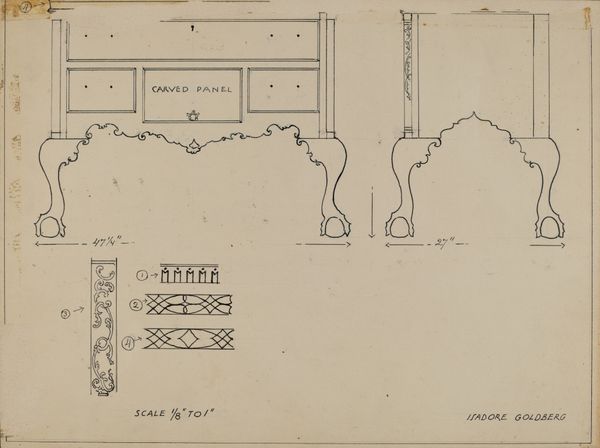
Ontwerp voor decoratie op drie wanden van de eetkamer van G. ten Hoopen c. 1752 - 1819
0:00
0:00
jurriaanandriessen
Rijksmuseum
drawing, paper, ink
#
drawing
#
neoclacissism
#
paper
#
ink
#
geometric
Dimensions: height 173 mm, width 160 mm
Copyright: Rijks Museum: Open Domain
Editor: Here we have Jurriaan Andriessen's "Design for Decoration on Three Walls of the Dining Room of G. ten Hoopen," created sometime between 1752 and 1819. It’s a drawing in ink on paper, and the style looks neoclassical. It almost reminds me of an architect's floorplan or a set design. How would you interpret this work? Curator: Well, as a historian, I see this more than a simple design. Consider the cultural moment: late 18th century. The rise of Neoclassicism signifies more than just a return to classical forms. It’s an expression of Enlightenment ideals. We see a desire for order, clarity, and rationality influencing even interior decoration. A room was not just a room, but a statement about one's place in society. Editor: A statement, how so? Curator: The client, G. ten Hoopen, undoubtedly belonged to a particular social class aspiring towards these Enlightenment ideals. The decoration reflects their desire to project an image of refined taste, informed by classical principles. Think about the institutions of the time that shaped taste – the art academies, the salons – all contributing to the establishment of Neoclassicism as the aesthetic of the elite. What kind of influence can the rise of Neoclassicism have on a private life? Editor: So, it’s not just decoration, it's participating in a whole cultural and social discourse? I never thought of interior design this way! Curator: Exactly! This drawing reveals how art served as a powerful tool for social distinction. Thinking about this commission this way certainly sheds new light on its value. Editor: I definitely see this drawing differently now. Thanks for showing how socio-cultural forces really are at play.
Comments
No comments
Be the first to comment and join the conversation on the ultimate creative platform.
